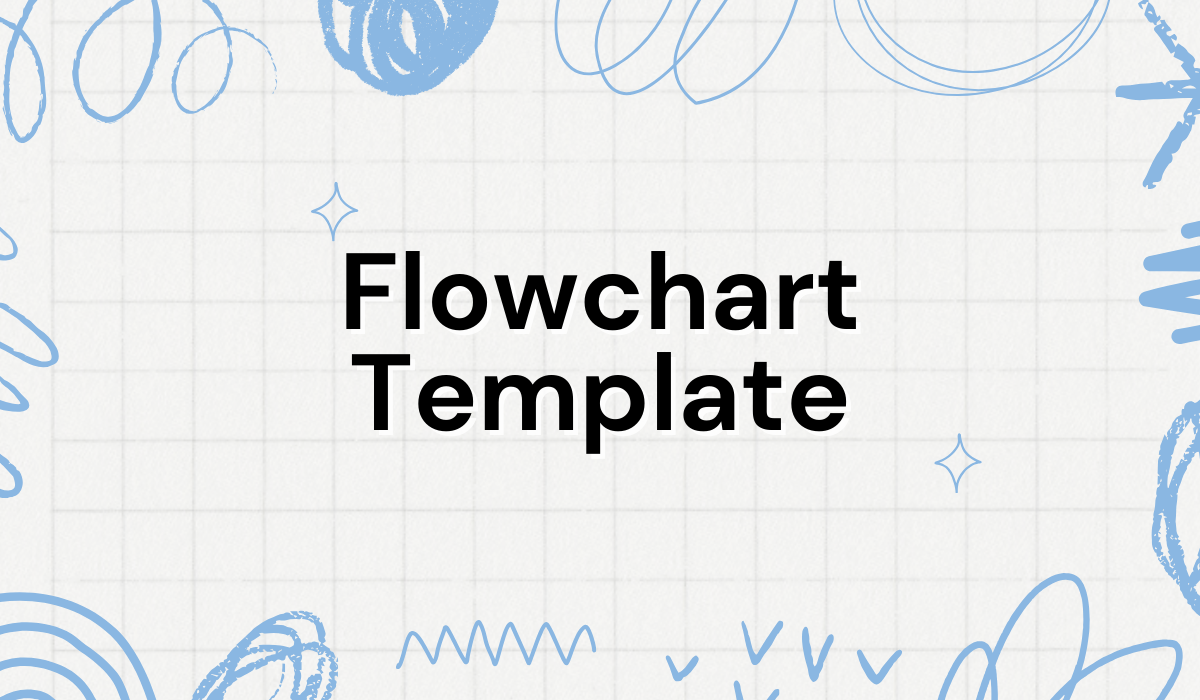Flowchart Template
Flowchart templates are incredibly useful tools that many people use to show how things work, how decisions are made,

Flowchart templates are incredibly useful tools that many people use to show how things work, how decisions are made, and how tasks get done. They turn complicated ideas into easy-to-understand pictures. These templates use special shapes and lines to connect these shapes, making it simpler for everyone to see what is happening and how things are connected.
Advantages of Using Flowchart Templates
Clear Understanding
Flowchart templates make seeing and understanding how a process works much easier. They turn hard-to-understand steps into clear pictures, which helps everyone get the idea quickly.
Better Efficiency
These templates lay out steps in a smart order, making it simpler for teams to finish their work without confusion. It is like having a map that guides you through your tasks so you know exactly what to do next.
Helpful for Analysis
With flowcharts, you can spot problems like delays or unnecessary steps in a process. It is like being a detective, finding clues in the flowchart that tell you where things are not working as they should.
Useful for Documentation
Flowcharts are great for keeping records of how things are supposed to be done. It is super helpful when you need to teach someone new or check how a process is supposed to work.
Different Kinds of Flowchart Templates
There are many kinds of flowchart templates, each designed for a specific purpose:
Process Flowcharts
These flowcharts show the steps of a process from the beginning to the end. They are like a storybook that tells you the sequence of events in a process.
Swimlane Flowcharts
Swimlane flowcharts are special because they show the steps and who is responsible for each step. Imagine lanes in a swimming pool; each lane is for a different swimmer. In a swimlane flowchart, each lane is for a different person or department in an organization.
Decision Tree Flowcharts
These flowcharts help with making choices. They outline the possible outcomes of different decisions, like a map showing where each road leads.
Workflow Diagrams
Workflow diagrams focus on the tasks within a project or an organization. They show how tasks move from one person or team to another, making sure everyone knows their part in the big picture.
Flowchart templates are like magic tools that make complex things simple. They help people understand how things work, make better decisions, and work together more effectively. Flowchart templates can be your best friend, whether in school, running a business, or just trying to organize your day.
Also read: Venn Diagram Template
How to Create a Flowchart Using a Template
Creating a flowchart with a template is a simple process that anyone can follow. Here is how you can do it:
Select a Template
First, pick the right flowchart template that fits what you need to show. Think of it as choosing the right kind of map for a journey.
Add Shapes
Next, bring shapes onto your drawing area to stand for your process’s different steps or actions. Imagine you are placing building blocks on a foundation.
Connect Shapes
Then, draw arrows to link the shapes. It shows how one step leads to the next, like a treasure map showing the path to the treasure.
Label Each Step
Write a short note on each shape to explain what it represents. It’s like labeling rooms in a house plan so you know which.
Popular Software for Creating Flowchart Templates
There are many tools out there to help you make flowcharts:
Microsoft Visio
It is a well-known program that lets you make very professional-looking flowcharts.
Lucidchart
Lucidchart is an online tool that allows people to work together in making diagrams and flowcharts.
Google Drawings
For simpler flowcharts, Google Drawings is an easy tool that works well with Google Drive.
Customizing Flowchart Templates
You can make your flowchart fit your needs by customizing it:
Color Coding
Use different colors to show different types of steps or different departments involved.
Adding Images
You can add pictures or logos to make your flowchart more personal and relevant.
Adjusting Layout
Move shapes and lines around to make your flowchart look better and more clear.
Best Practices for Using Flowchart Templates
To get the most out of flowcharts, keep these tips in mind:
Keep It Simple
Do not cram too much information into your flowchart. It should be easy to read and understand.
Use Consistent Symbols
Stick to the same symbols throughout your flowchart to be easy to follow.
Review and Update Regularly
Periodically check your flowchart to ensure it is still correct and update as needed.
Real-life Applications of Flowchart Templates
Flowcharts are used in many different areas:
Software Development
They help show how software works or how to develop it.
Manufacturing
Flowcharts are used to outline how things are made or checked for quality.
Project Management
They are great for planning projects and determining what depends on what.
Comparison: Hand-drawn vs. Digital Flowchart Templates
While drawing by hand gives a personal touch, digital flowcharts have several advantages:
Accuracy
Digital flowcharts are precise and consistent.
Editability
It’s easy to make changes without messing up the whole flowchart.
Sharing and Collaboration
Digital flowcharts can be shared easily, letting teams work on them together.









